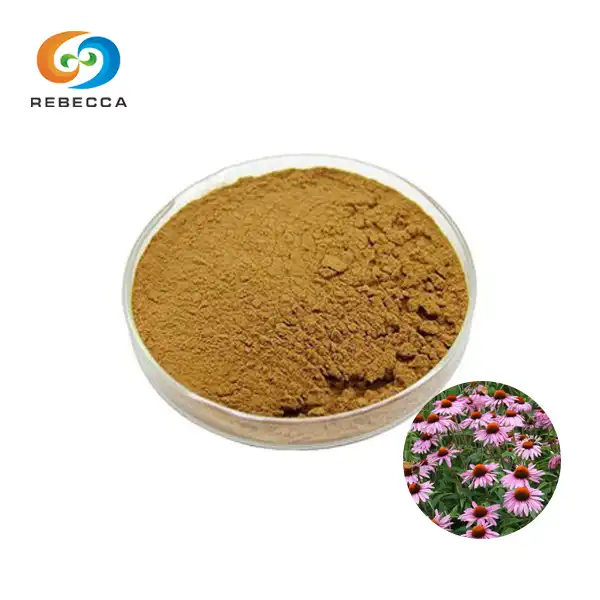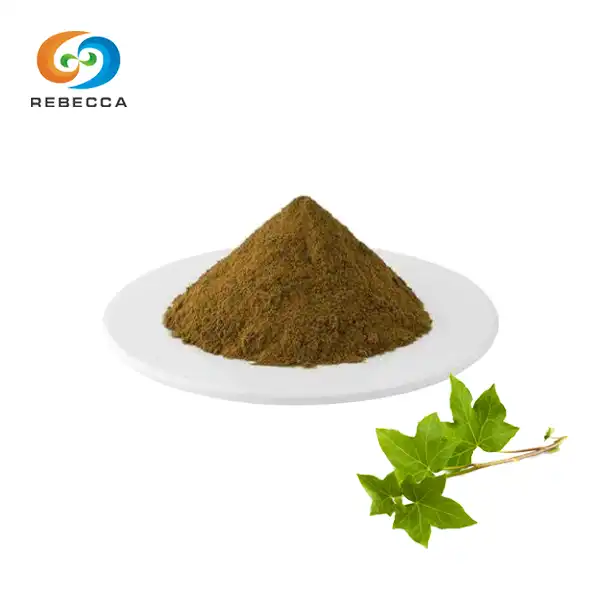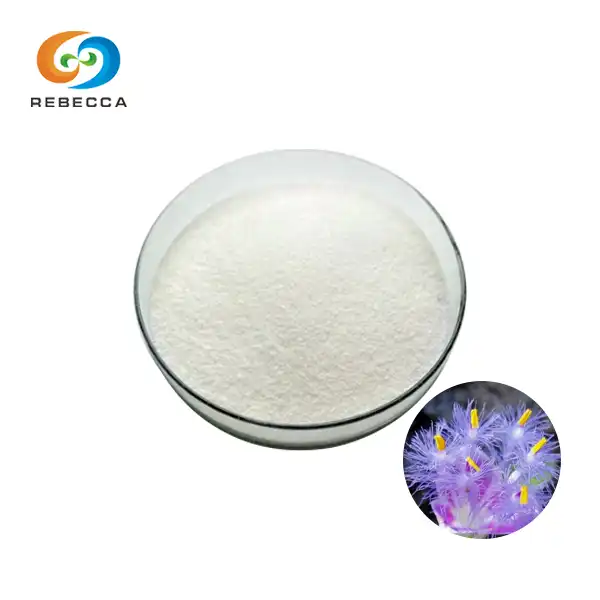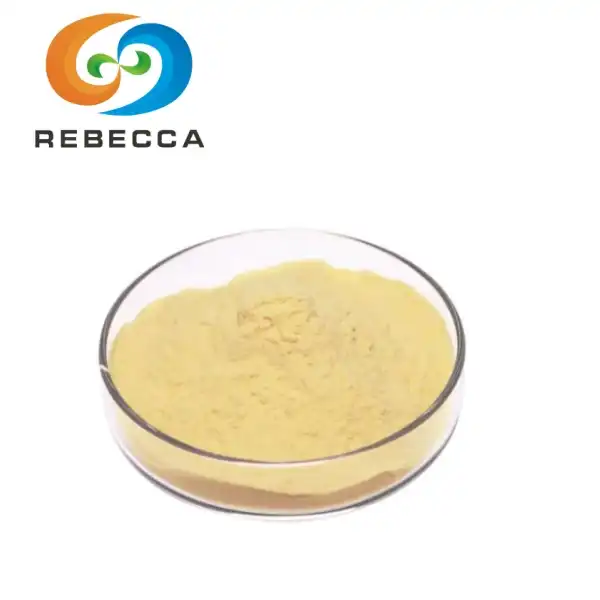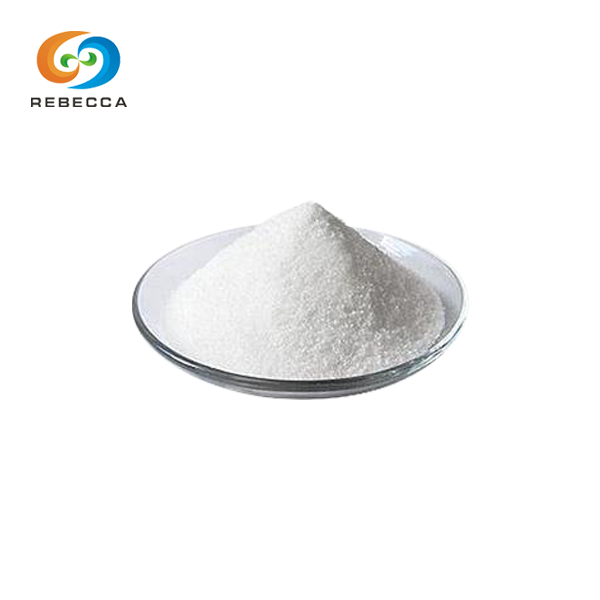Capsaicin Synthetic Pathway
Capsaicin, the substance that gives chili peppers their intense heat, has captivated researchers, chefs, and spice enthusiasts for decades.Synthetic Capsaicin has found its way into a variety of industries, including pharmaceuticals and personal defense products, in addition to its culinary uses. This molecule's synthetic pathway not only paves the way for more effective production methods and potential innovations in related fields, but it also satisfies our scientific curiosity.

Starting Materials
Beginning with carefully selected starting materials, capsaicin synthesis begins. The molecule of capsaicin is constructed on top of these compounds. Typically, the primary starting materials for the synthesis of capsaicin are:
1. Alcohol vanillyl: Capsaicin's core structure is this aromatic compound. It is made from vanillin, which can be made or found naturally in vanilla beans.
2. Aldehydes or alcohols with long chains: Capsaicin's hydrocarbon tail is introduced by means of these compounds. The choice between aldehydes and alcohols is determined by the desired synthetic route.
3. Methyl source: An amine compound is required for capsaicin to form the distinctive amide bond. A common source of this is nitrogen-containing molecules like amino acids.
4. Agents of coupling: The amide bond between the amine and the vanillyl alcohol derivative is made easier by these reagents.
5. Various catalysts and solvents: Throughout the synthesis, these additional components are essential for regulating reaction conditions and promoting desired transformations.
The synthesis is only as good as the purity and quality of these starting materials. Better yields and fewer side products are guaranteed by high-grade reagents, making the production process more cost-effective and efficient.
Conditions
Capsaicin synthesis is highly dependent on carefully controlled reaction conditions. The yield, purity, and even the particular isomer of capsaicin produced can all be significantly impacted by these conditions. Let's look at some of the most important conditions for capsaicin synthesis:
1. Temperature: Many strides in capsaicin blend are temperature-delicate. For instance, the alkylation step frequently necessitates high temperatures between 60°C and 100°C for effective execution. However, side reactions or the decomposition of sensitive intermediates can occur at temperatures that are too high. In contrast, the amide bond formation step may be performed at lower temperatures—sometimes even at 0°C—to control the rate of the reaction and reduce the amount of side products.
2. pH: Particularly during the step of amide formation, the acidity or basicity of the reaction mixture is critical. For the coupling reaction to work well, a slightly basic environment (pH 8-9) is usually preferred. However, the precise pH can vary based on the method and reagents used.
3. Solvent: The outcome of a reaction can be significantly influenced by the solvent used. Dichloromethane, tetrahydrofuran (THF), and dimethylformamide (DMF) are typical solvents utilized in the synthesis of capsaicin. The selection of these solvents is based on how well they dissolve the reactants, how inert they are to the conditions of the reaction, and how easy they are to get rid of after the reaction.

4. Atmosphere: Oxygen and moisture are sensitive factors for many synthesis steps. As a result, nitrogen or argon gas is frequently used in inert atmospheres to carry out reactions. This reduces unwanted side effects and boosts yield overall.
5. Time to react: Each step can take anywhere from a few minutes to several hours or even days to complete. To determine the ideal reaction time, it is essential to monitor the progress of the reaction, typically using HPLC or thin-layer chromatography (TLC).
6. Additives and catalysts: To speed up reactions or increase selectivity, a variety of catalysts can be used. Phase-transfer catalysts, for instance, may be utilized during the alkylation step, while coupling agents such as EDC or DCC are essential during the amide formation step.
7. Concentration: The rate of reactions as well as their selectivity can be affected by the concentration of the reactants. While more concentrated solutions typically speed up reactions, they may also make side effects more likely.
8. Pressure: Although the majority of the steps in the synthesis of capsaicin take place at atmospheric pressure, some specialized processes may make use of high-pressure conditions to create equilibriums or speed up reaction rates.
9. Exposure to light: Light may be sensitive in some reactions, especially those that involve sensitive intermediates. In such instances, the reaction might be carried out at night or with amber glassware to block out light.
10. Mixing and stirring: When scaling up the synthesis, efficient stirring is especially important for ensuring uniform distribution of reactants and heat.
Chemists can optimize the synthesis of capsaicin by carefully controlling these conditions, increasing yields and purity while decreasing waste and byproducts. The precise synthetic route chosen and the scale of production can influence the specific conditions used.
Example Synthetic Route
Let's take a look at a Synthetic Capsaicin route for capsaicin to better understand the ideas being discussed. Although there are numerous variations and alternative approaches, this approach is based on common laboratory and industrial methods.
Step 1: Preparation of Vanillyl Alcohol To begin, reduce vanillin in methanol at 0°C with sodium borohydride (NaBH4). This produces vanillyl alcohol by converting the aldehyde group into an alcohol.
Step 2: Alkylation of Vanillyl Alcohol In the presence of potassium carbonate (K2CO3) in acetone, react vanillyl alcohol with 8-methyl-6-nonenal. Heat the mixture for 4-6 hours under reflux. The long hydrocarbon chain is joined to the vanillyl alcohol by this Williamson ether synthesis.
Step 3: Oxidation of Alkylated Vanillyl Alcohol Oxidize the alkylated vanillyl alcohol's primary alcohol group into a carboxylic acid. This can be accomplished by stirring Jones reagent (CrO3 in diluted H2SO4) in acetone for two hours at 0°C.

Step 4: By reacting with thionyl chloride (SOCl2) in dichloromethane, the carboxylic acid is transformed into an acid chloride. Reflux for two hours in an inert environment.
Step 5: Amide Formation In dichloromethane, the acid chloride reacts with the ammonia at 0°C before slowly warming to room temperature over two hours. Capsaicin's essential amide bond is formed by this.
Step 6: Purification Combine extraction, recrystallization, and column chromatography to purify the crude product.
The essential steps we've discussed are illustrated by this synthetic route: the formation of the amide bond, alkylation of vanillyl alcohol, and various modifications and purification procedures. To get the best yield and purity from each step, conditions like temperature, solvent choice, and reaction time need to be carefully controlled.
It's important to remember that this is just one option. Enzymatic reactions or alternative reagents might be used in industrial processes to cut costs or increase efficiency. Scale, available equipment, cost considerations, and specific product requirements all play a role in determining the exact route taken.
Nonivamide Supplier
Nonivamide is a synthetic version of Synthetic Capsaicin that has many of the same properties as the real thing, but it can be more stable and easier to make on a large scale.
Finding a dependable supplier is essential for anyone looking to acquire nonivamide for industrial or research purposes. Rebecca Bio-Tech, a company that has established itself as a major player in the nonivamide market, is one such supplier.
Rebecca Bio-Tech is acknowledged as China's largest nonivamide manufacturer. They have established a reputation for offering competitively priced nonivamide of high quality. Their annual production capacity of 24 tons of nonivamide is impressive.
The company is a go-to source for businesses and researchers requiring large quantities of nonivamide due to its focus on quality control and significant production capacity. They must have optimized their synthetic processes for efficiency and scalability to produce such large quantities. Please get in touch with: for more information. information@sxrebecca.com
References
1. Fattori, V., Hohmann, M. S., Rossaneis, A. C., Pinho-Ribeiro, F. A., & Verri, W. A. (2016). Capsaicin: Current understanding of its mechanisms and therapy of pain and other pre-clinical and clinical uses. Molecules, 21(7), 844.
2. Reyes-Escogido, M. D. L., Gonzalez-Mondragon, E. G., & Vazquez-Tzompantzi, E. (2011). Chemical and pharmacological aspects of capsaicin. Molecules, 16(2), 1253-1270.
3. Gupta, R., Zyryanov, G. V., Kashparova, V., Giri, R., & Tahir, M. N. (2021). A review on synthesis of capsaicin and its diverse therapeutic applications. Synthetic Communications, 51(7), 1025-1052.
